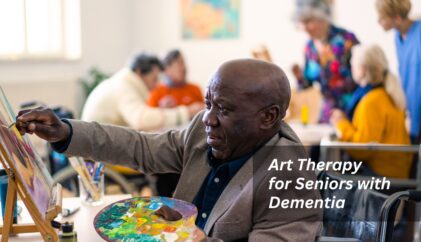
For many of us, life is a masquerade, made up of costume changes to fit the scene. Let’s take a look at some notable masks that we have been conditioned to not see...
Snow White and the Seven Disorders
It’s that time of year: the season when Halloween pop-up stores appear on every corner and pumpkin spice is abundant. Many people love Halloween festivities. Who doesn’t enjoy a chance to take on a different persona, a different perspective, to be someone or something they typically are not? (Note: The candy and scary movies aren’t terrible perks either!) But that said, Halloween is a day on which many people choose to wear a mask, whereas others feel safe removing theirs.
For many of us, life is a masquerade, made up of costume changes to fit the scene. We button up before a business meeting, put on a professional mask and persona, despite our exhaustion from disrupted sleep the prior evening. Perhaps the mask is there as we are not quite as prepared for the meeting as we would have liked. We tailor our sense of humor to match the social group with whom we are spending time. We bite our tongues at family gatherings (No? Just me? Okay, moving on). Psychological masks can be practical garments in our wardrobes. They can be empowering, functional or protective.
Let’s take a look at some notable masks that we have been conditioned to not see - that hide inner struggle - those of the Seven Dwarfs. These are lovable, adorable, characters treasured by children (and adults) of all generations. But, have you ever paused to consider what they might be masking? The more I thought about them, the more I realized that there just might be an explanation for their behaviors. (This is written in jest and not meant to be a scientific paper on the potential mental health disorders these characters could suffer - they do not meet DSM criteria for all, so please read this, and laugh, with the spirit in which it was intended).
Despite being written by the Brothers Grimm, many of us are most familiar with Disney’s version of Snow White and the Seven Dwarfs. Released in 1932, Disney’s first full-length animated feature became an instant classic. There are significant differences between the two versions. In the Grimm version, the dwarfs are unnamed and have no personalities. Disney, however, created 7 individually named characters who embody specific human characteristics that drive their names. Let’s take a closer look at what may lie behind the caricatures of these lovable little men.
Sneezy, as his name implies, is constantly sneezing. Perhaps it is the dust from the mines that is creating such significant allergies. However, could it be that poor Sneezy is under so much pressure to live up to his name, that he would not understand his own identity should he get better. He would likely have to rework his own sense of self and place in the world should the symptoms abate. Is it possible that, as he is the only dwarf who suffers from this constant sneezing despite them all working in the same environment, that he misreads, and maintains his own health status, and fixates on his ailment so as to continue to receive secondary gratification from others? Does sneezing keep him grounded in his own reality? Would medication (or Claritin) shift his personality? A somatoform disorder, or hypochondriasis could easily be addressed by a therapist or PCP….food for thought!
Sleepy is constantly yawning and frankly, unable to stay awake. When he is not working at the mine, he sleeps as much as he can, and sometimes, falls asleep in the middle of a conversation. Sleepy is characterized by mental cloudiness, and exhaustion despite getting ample sleep every night. Regardless of the situation, he cannot concentrate and always falls into blissful sleep everywhere the dwarfs travel. Perhaps a sleep study, a CPAP machine, or some stimulants are in order to assist this gentle dwarf? Narcolepsy, sleep apnea, and a variety of other disorders may be at play here.
Dopey isn’t really “dopey,” now is he? A happy, playful dwarf who loves to play silly games and crafts ways in which to sneak kisses from Snow White. He is quite intelligent but gets a bad rap as he won’t speak. Perhaps his mutism is derived from social anxiety, past trauma, or adjusting to having a woman living in the cottage with him when he was only used to his 6 fellow dwarfs. I would place a bet that one day, Dopey will choose to speak and the other dwarfs will be shocked as to how he can solve the quadratic equation, and the mysteries of the universe…maybe he just needs a little therapy (and perhaps an anit-anxiety agent) to feel secure enough to share his philosophies? (Doc would not respond well to this….anyone have an opening for couples therapy?)
Happy is, well, happy! Always cheery, cracking jokes, viewing the humorous side of each situation - at first, I wasn’t sure he had a psychological disorder. Then, I thought harder, and realized, that Happy never has a shift in affect. As someone with a similar name, I can attest that I am not always Joyful (shocking, I know!). Is it possible that Happy is actually experiencing one long manic episode (at least for the duration of the film/story)? He talks excessively, overindulges in activities that bring him pleasure, and demonstrates little need to sleep. I don’t see the grandiose elements, but is there something his psyche is covering up, that won’t allow him to sit with the sadness, the fear, or the darker elements of fairly isolated living? Day in and day out the routine does not deviate - wake up, go to the mine, clean the house, rinse, lather, repeat. I wonder how his demeanor might change with some unconditional positive regard, and some tricks to sit with some of the sadness? Any guesses? It is possible that with some mood stabilizers (and a reduction in caffeine) that Happy could present as more tempered, experiencing the full range of emotional responses.
Bashful is painfully shy and excessively self conscious. Constantly blushing and twisting his beard into knots (ouch) especially when Snow White is around, Bashful struggles with his sense of self and place in social situations. Social Anxiety is strong with this one. This poor dwarf cannot stop blushing, finds it difficult to organize his thoughts and evidences word finding issues, all while dealing with a racing heart and desire to be loved and connected. I wonder how he would present with mild exposure therapy, or some SSRI’s?
Grumpy is always complaining. He never agrees with anyone, he only sees the glass half empty and functions in a world of dichotomous thought, where he only can accept the negative. He shares his negative views in a gruff, brash manner. Characterized by being sad and angry, with negative thoughts, a lack of interest in activities typically found enjoyable, coupled with observable disturbances in sleep, it is likely that Grumpy has Major Depressive Disorder, mild, recurrent. Some talk therapy, journaling, and an antidepressant might do him a world of good.
And then there is Doc. Akin to the Sigmund Freud of the bunch, Doc is revered as wise. He likes to think carefully about the issues at hand and hopes that he has all the answers. He functions as the leader of this motley (but adorable) crew, but he is not always successful. With an anxious disposition and a perfectionistic attitude, Doc is sometimes lost in his head. He has been known to trip over his words and stumble in the explanation (and execution) of his plan. Perhaps the pressure of leading the group creates an undiagnosed anxiety disorder? Anxiety Unspecified? You be the judge.
Overall, the Seven Dwarfs symbolize different aspects of human emotion and different aspects of our own selves. They span the gamut of affect, thus reminding us what masks can hide. This Tuesday, I invite you to remember to look behind the mask or take a mask break - It is nice to remove the mask and feel liberated once in a while!



